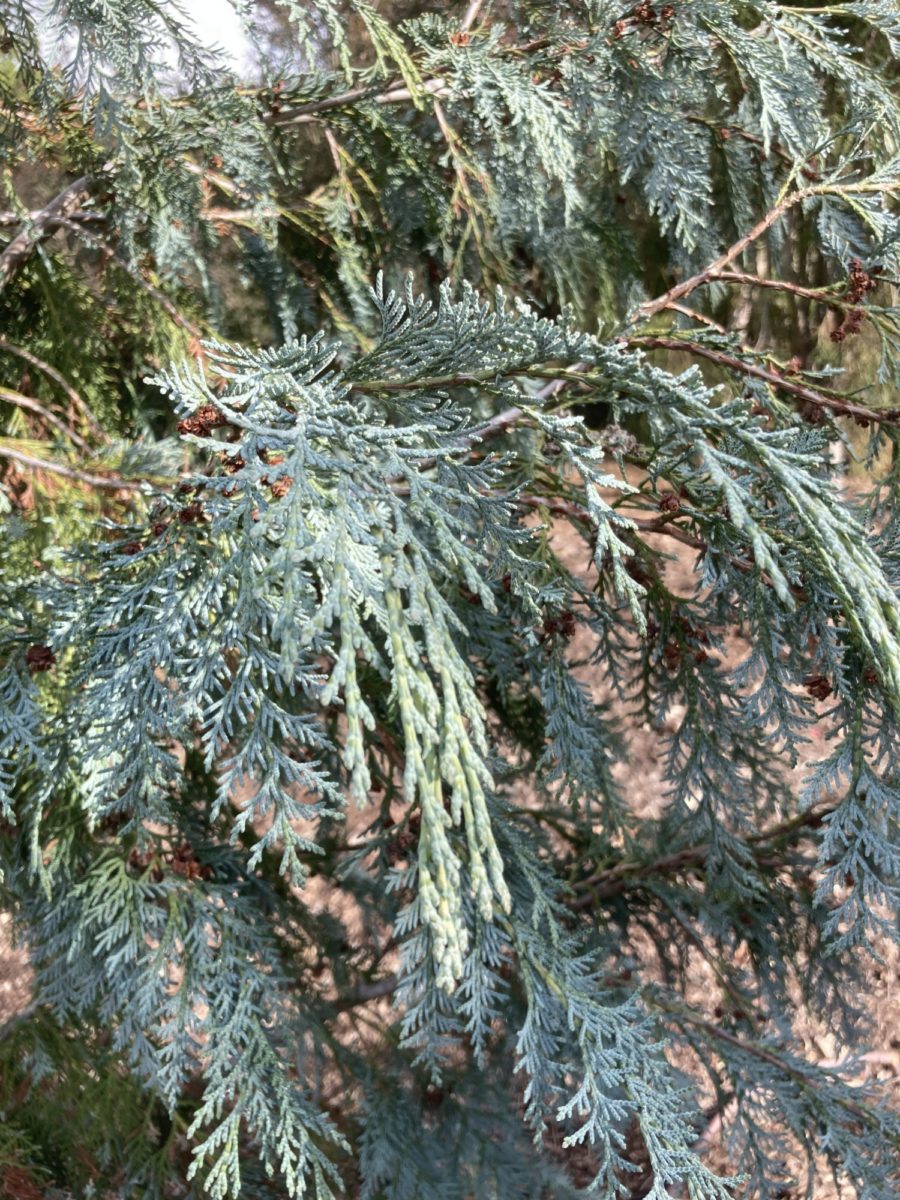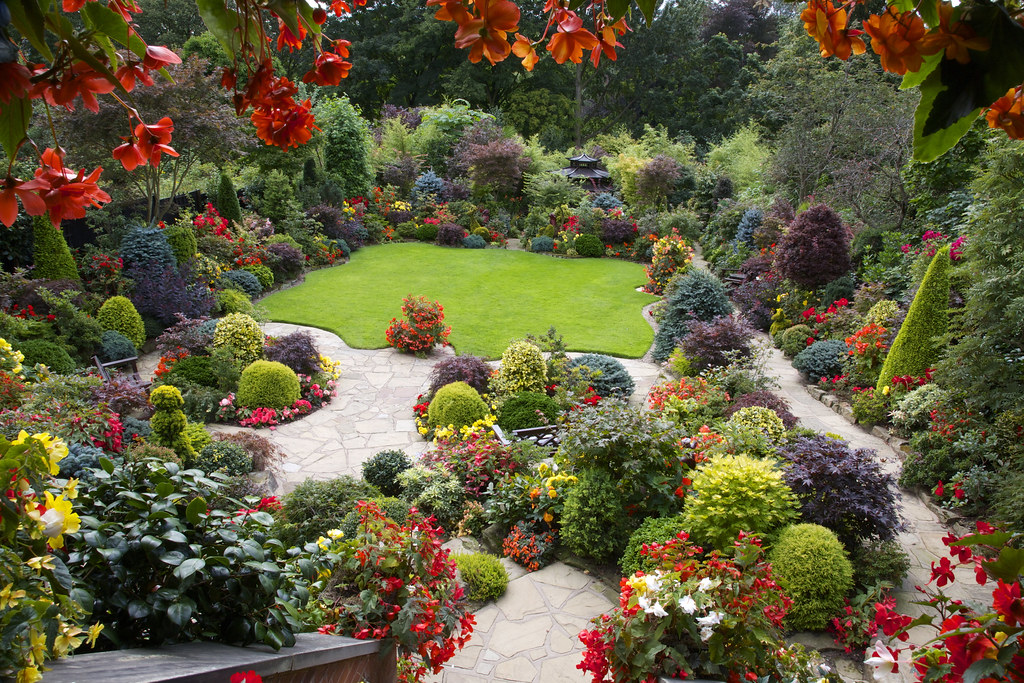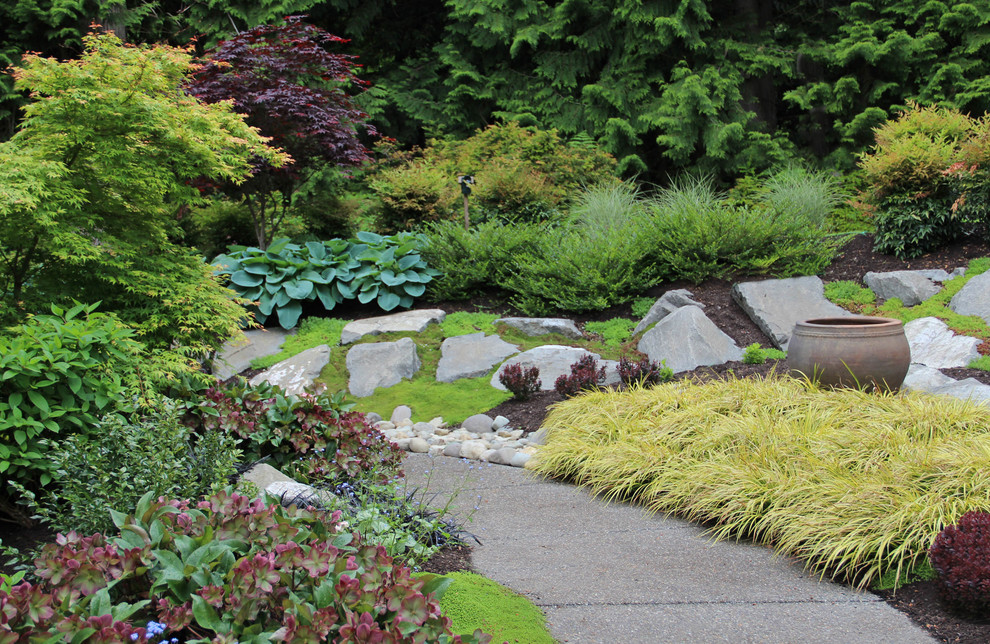


For nearly 20 years we had a cookie-cutter front yard - bluegrass, one tree, builder front porch. This Cupressus macrocarpa 'Wilma' at the Mendocino Coast Botanical Garden brightens the landscape in late fall.“We're original owners of a "semi-custom" home built in the early 90's. Arboretums and family estates must think about planting for the ages, but since we can’t control what happens to our gardens when we move away or pass on, it is generally most useful to think in terms of growth over a few decades when selecting individual trees. Woody plants (those with trunks and bark) never stop growing, but their growth rates vary widely, and most will slow down as they mature. Remember, that is 10 years from the time that the plant was started you will likely be buying a tree that is already several years old. The most useful are those that are designated dwarf, which grow 1-6”/year, and will be roughly 1’ – 5’ after ten years. The ACS has identified four ‘sizes’ (really growth rates) of conifers. Again, those accessories are the flowers.įor the purposes of this discussion, when we say ‘conifers’ we mean dwarf conifers, which are selections that are slower growing than the wild plants that we find in nature. It’s also similar to getting dressed you put on your clothes and then accessorize with scarves or ties or jewelry. Conifers represent the structure, perhaps some of the furniture. Photo credit, WikipediaĪpproach designing your yard or garden the way that you approach decorating your house: first comes the structure, then the furniture, then the knick-knacks, pillows and other decorations. This is NOT what we would suggest, but what many people 'see' when they hear the word 'conifer'. Others, unaware of the vast array of colors, shapes, textures and sizes available, can only think of Christmas trees. It’s no wonder that some people shudder when they hear the word. Then there was the fashion in the 1970s of planting beds of nothing but conifers, generally crowded together and left unmanaged and unpruned.

Unfortunately, developers and landscapers often didn’t check the growth rate before they planted that cute little tree next to the house, which eventually towered over the roof, way out of proportion and shutting out all light, even in winter. Before dwarf selections were available, most conifers simply got too big for any but the grandest and largest gardens. If you are one of those people and you are wondering whether to plant petunias or poppies, lobelia or lavender, take a step back and think about beginning with structural plants that add interest all year long: dwarf conifers.Ĭonifers have gotten a bad rap for decades. residents own homes, which means that some 45% of the population, or 148 million people, have yards, gardens or terraces and don’t, themselves, garden. population gardens, perhaps a little more if we include those who limit their gardening to food crops. And not just flowering plants as they are defined by botanists, which includes trees such as maples and oaks, but specifically plants with showy flowers: roses, lilacs, lavender, poppies and the like.Īpproximately 20% of the U.S. Most of us think of flowering plants when we envision a garden or home landscape. Additions to the International Conifer Register.


 0 kommentar(er)
0 kommentar(er)
